
"I have candles at home, lots of them. My grandson came and said: 'Grandma, give us some, we will talk to [popular rock singer Viktor] Tsoi.’ [...] I said, ‘Then find out from him... how long I will live.’ They asked Tsoi. Up to eighty-five, he said. I am 82, it’s three more years then.”
This story by Olga Nikitina (b. 1924), a Vologda peasant woman, was recorded in 2006 by ethnographers Andrei Toporkov and Anastasia Aidakova.
According to historical research, spirit-summoning appeared among Soviet children in the mid 20th century. Some memoirs mention that the first "invocations" date back to the 1940s, and in the 1960s and 1970s they spread throughout the USSR. Anna, a Muscovite whose father worked at the University of Constantine (Algeria) in the 1980s, recalls that the game of "summoning the imp" was known to absolutely all Soviet children whose parents worked in diplomatic or scientific jobs there.
"My parents worked at the university together, and we, their children, accordingly played together – Russians, Armenians, Moldovans, etc. Naturally, everyone was Russian-speaking and everyone brought their scary stories, dark humor and scary rituals after summer vacations in the USSR. And imp summoning was very popular with us," says Anna.
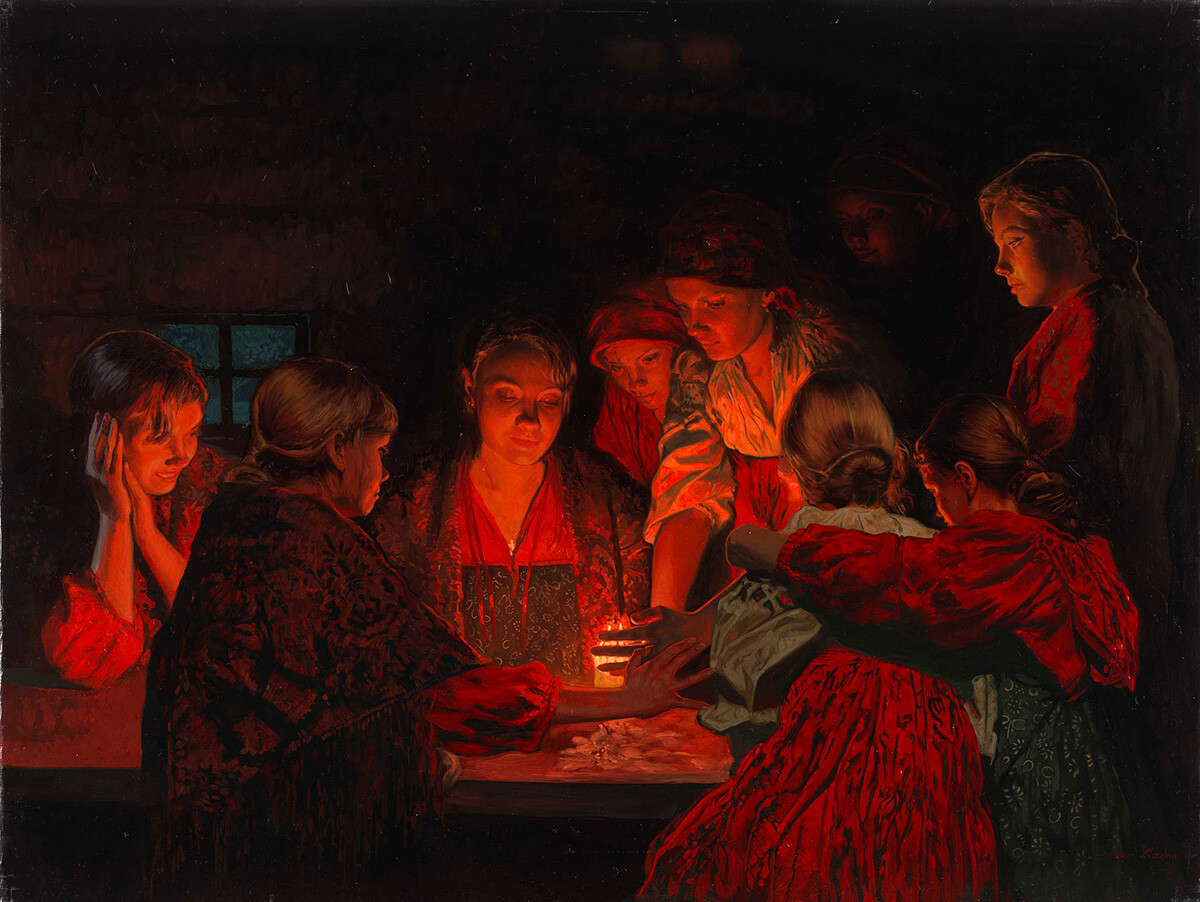
"Fortune-telling at Svyatki," by Simon Kozhin
Foundation "Cultural Heritage ", St. Petersburg."Invocations" might have appeared among Soviet people as a reaction to the Bolshevik ban on traditional "mystical" practices. In the minds of the ruling party in the Soviet Union, fortune-telling during Svyatki in winter and on the night of Ivan Kupala in summer should have become as much relics of the past as the rituals of the Orthodox Church. But instead, invocations appeared among Soviet teenagers. The children often referred to this practice as "fortune-telling," using the two terms synonymously.
"We were fortune-telling at night, all of us fortune-telling together, when we summoned the Queen of Spades. She came, and we threw a handkerchief over the mirror so that she would get away faster. She was scary," recalled 11-year-old Olya speaking to researcher Natalia Urvantseva.
Who was summoned? The spectrum of these entities was quite broad. As Urvantseva writes, "the formation of modern children's folklore is influenced by Russian folklore, literature, and mass-media culture."
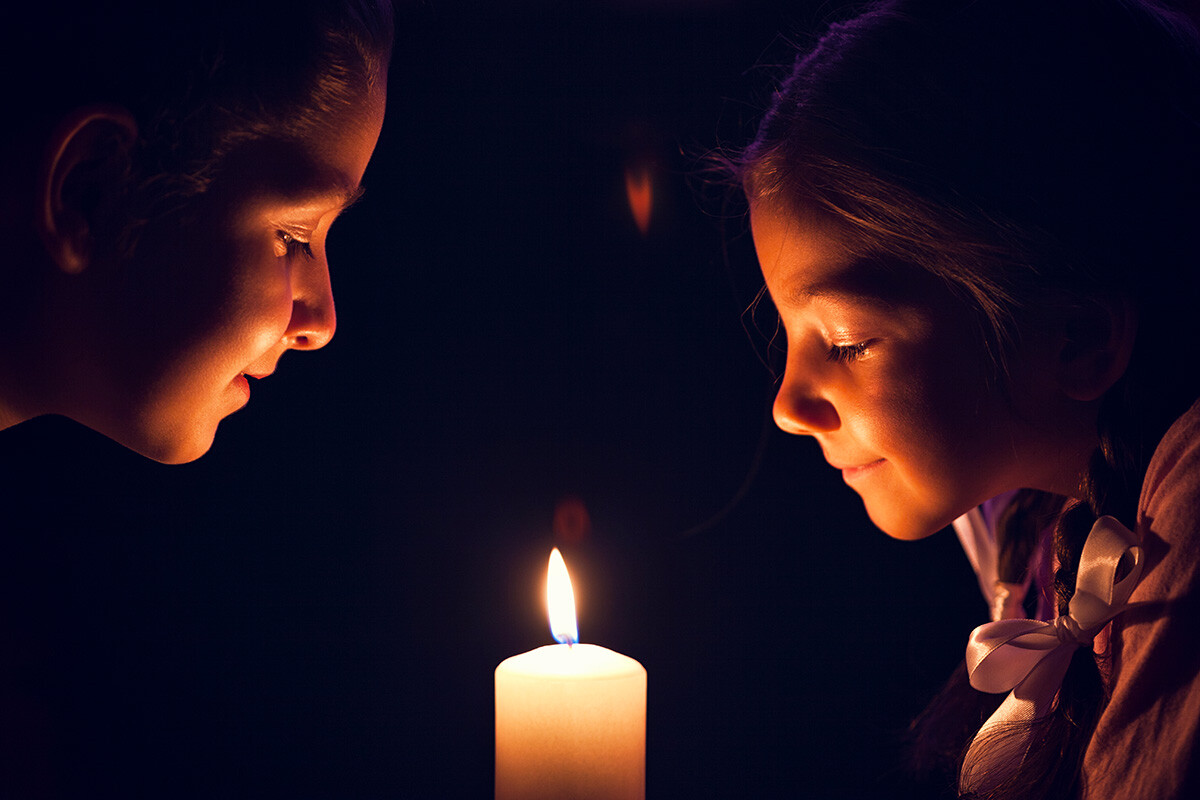
Starting with summoning Pushkin and one of his characters – the Queen of Spades, invocations have moved on to many characters. Among these are the domovoy, Cinderella, Little Mermaid, Little Red Riding Hood, Carlson, Baba Yaga, as well as the spirits of famous historical figures – Catherine the Great, Napoleon, Lenin, Stalin, poets and writers – Gogol, Lermontov, Yesenin, Mayakovsky, and Dostoevsky. In the 1990s, Tsoi and even the popular TV presenter Vlad Listev, who died at the hands of a hitman, were ‘summoned’.
One of the most popular ‘summoning’ characters is the Swearing Gnome, and Babka the Swearer. Children told each other that if they managed to "summon" these creatures, they would start running around the room, swearing ruthlessly. Here, we can see the children's desire to join the forbidden, adult culture, an integral part of which was the right to use foul language.
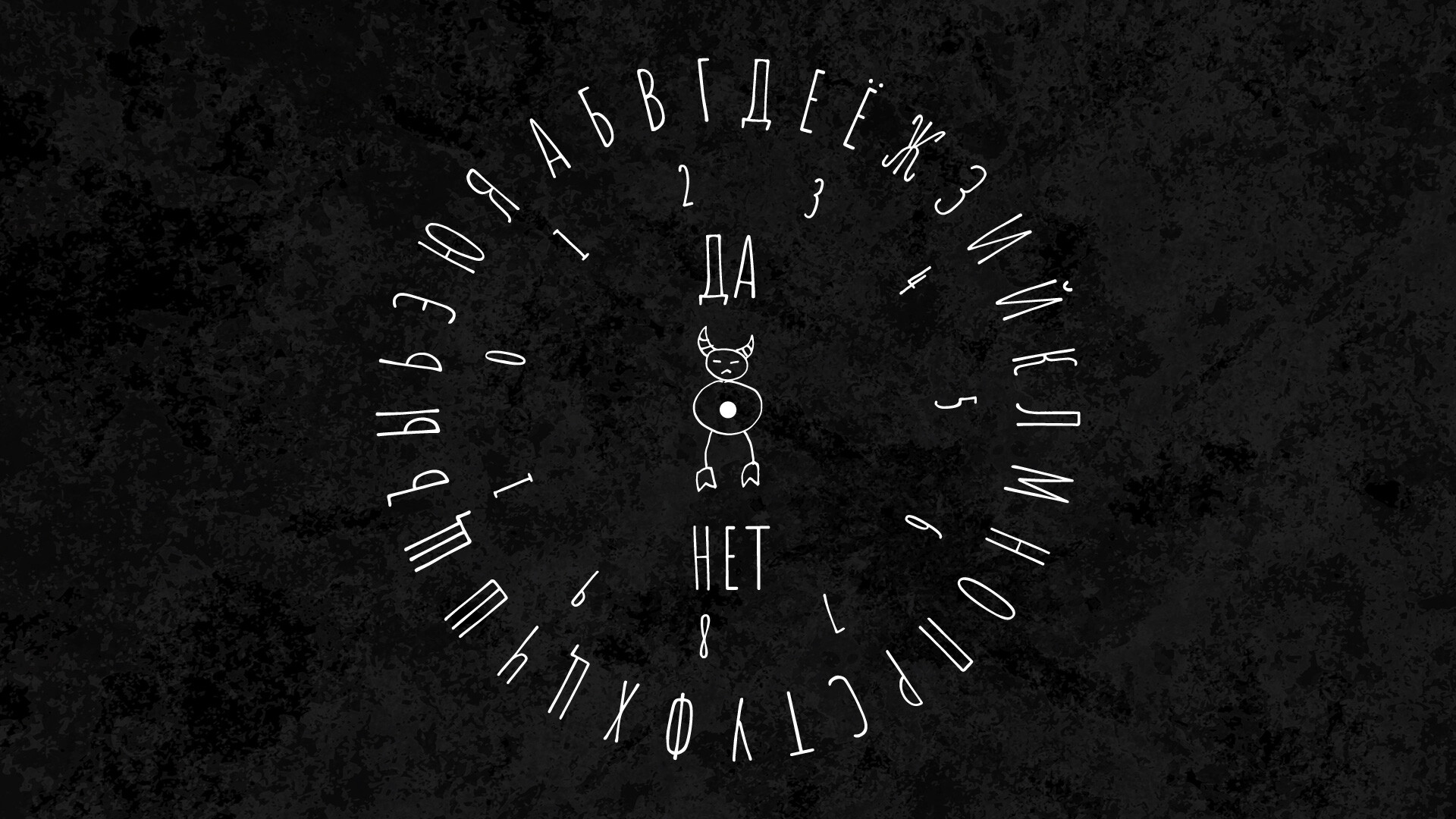
A typical "invocation circle" with an imp in the center.
Alexander KislovThere are many ways of "summoning", but they all have common features. As Urvantseva writes, "for safety reasons, fortune-tellers should observe certain etiquette relations with the otherworld, which consist of certain rules of behavior and prohibitions.”
The special conditions for summoning were time and place, emphasizing the "ritual": children often gathered for "invocations" at night, secretly from adults, at a "forbidden" time. If they gathered during the day, they closed themselves in a room, curtained the windows, creating a "mystical" atmosphere. When "summoning," certain prohibitions were observed: for example, no one is allowed to talk; as well as one must not laugh, turn on the lights, move, etc.
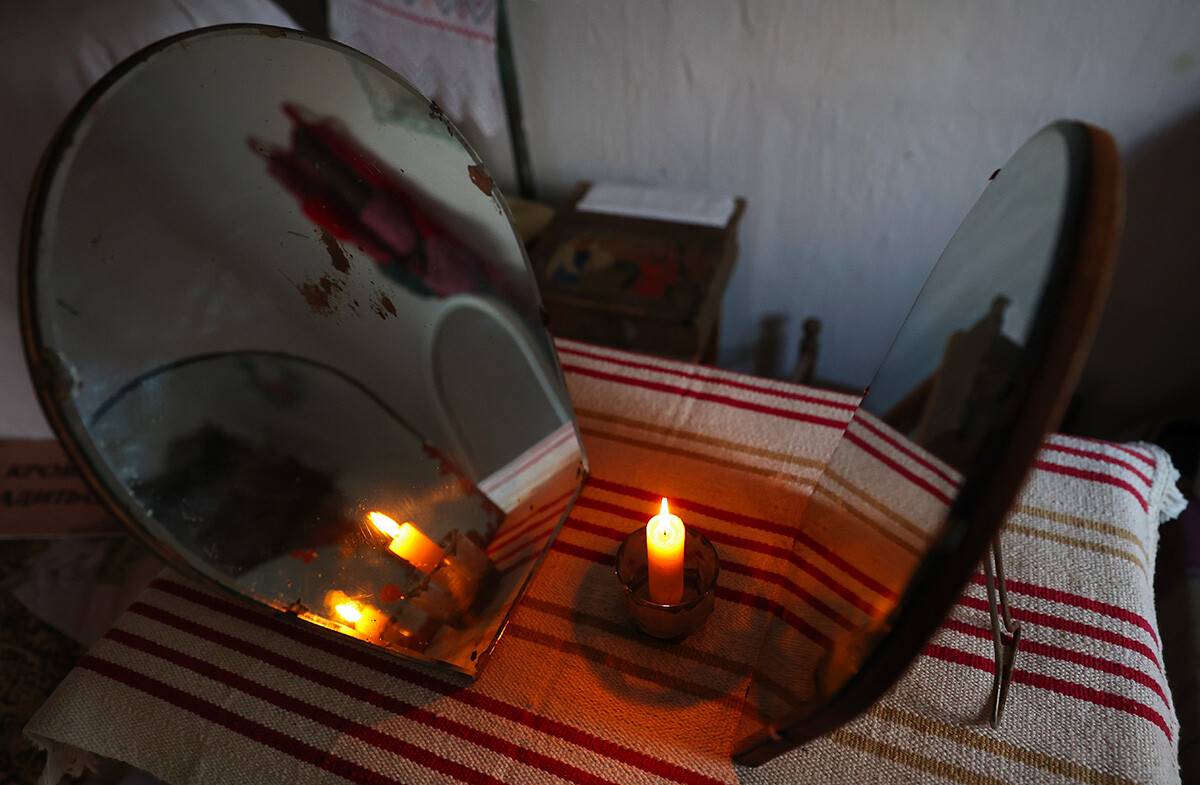
A setup of two mirrors and a candle, which can be used for "invocation."
Vitaliy Timkiv/SputnikA wide variety of ways to summon exists. Here are the most popular:
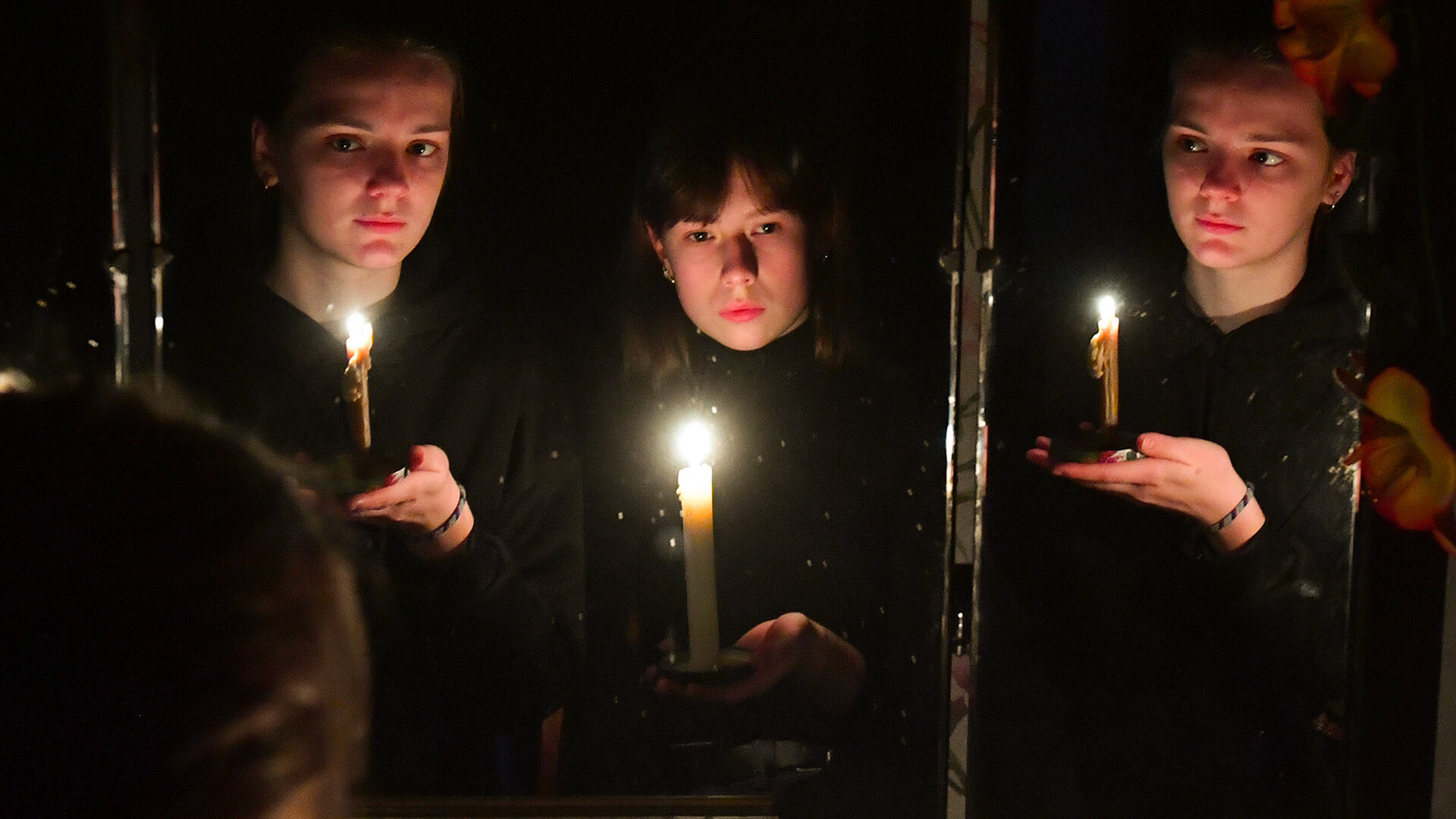
In addition to the fact that the invocation of spirits is a fun and scary game, the goal, especially for children 11-12 years old, was to try to find out what awaits them in the future. Many children were already old enough to understand that invocation is a game of spiritualism, that the needle is swung by one of the children holding it, and a handkerchief is thrown on the mirror faster than you have time to see something there. Some children deliberately played along in the process, forcing others to believe that the "gnome" or "Tsoi" really appeared.
"We were ‘summoning the gnome.’ It was necessary to pronounce some spells in the dark, so that water would flow from the tap ‘all by itself,’ which would mean that ‘the gnome came,’" says Veronika from Samara. "And so, my friend and I locked ourselves in a dark bathroom and began to recite these spells, and I turned on the faucet silently, and water gushed out. My poor friend was so scared that she burst into tears and ran away. I felt ashamed for scaring her so."
Nevertheless, the children continued to participate in invocations until, after repeated failures, they were disappointed by the activity. Well, in the English–speaking society, the spiritualistic game - Ouija board, which in essence is similar to fortune-telling with a saucer, is still very popular.
If using any of Russia Beyond's content, partly or in full, always provide an active hyperlink to the original material.
Subscribe
to our newsletter!
Get the week's best stories straight to your inbox